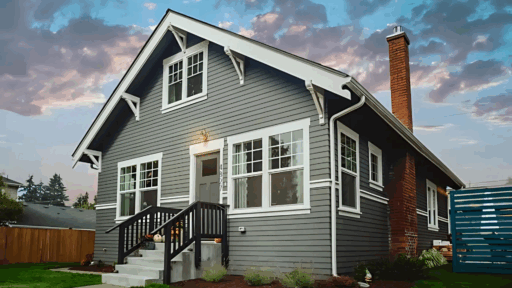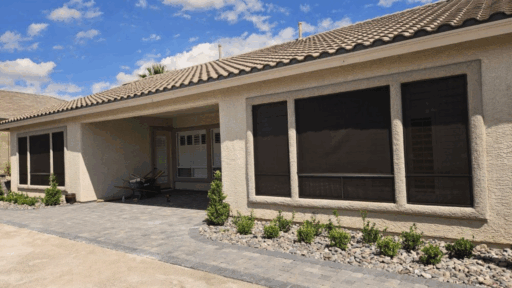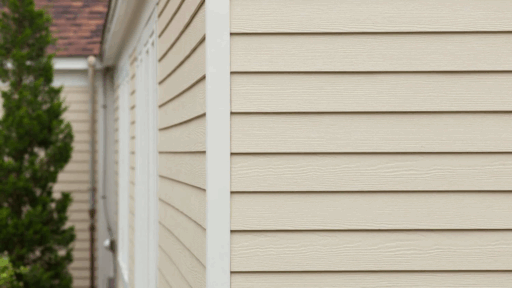Your home’s siding is starting to show signs of wear and tear. Cracks are widening, and the paint continues to peel, despite your repeated attempts to repair it.
Energy bills are rising, and it’s becoming increasingly difficult to ignore the issue.
You’re not the only one. Many homeowners face the same issue each year. Old siding doesn’t just look bad, it lowers your home’s value and makes it more expensive to keep warm or cool.
In this article, you’ll learn everything you need to know about how much siding replacement really costs.
I’ll share actual numbers based on recent projects and highlight hidden costs that most contractors won’t disclose upfront.
After helping homeowners for over ten years, I know what information matters most. You’ll walk away knowing exactly what to budget.
No surprises. No pressure. Just the truth you need to make the smartest choice for your home and your family.
How Much Does It Cost to Redo Siding?

Most homeowners spend between $12,000 and $25,000 on complete siding replacement. That’s for an average 2,000-square-foot home. The following is what I see most often:
- Budget projects: $8,000 to $12,000
- Mid-range projects: $15,000 to $20,000
- Premium projects: $25,000 to $40,000
Don’t forget the extras. Permits, cleanup, and repairs can add $2,000 to $5,000 more.
Factors That Affect Siding Replacement Costs
Several key factors can influence the cost of siding replacement. It’s not just about picking a material and getting a price per square foot. What’s around and under your siding matters, too.
Before you start planning your budget, understand these major cost drivers:
- Size of your home
- Home shape and design
- Location and regional labor rates
- Condition of existing siding
- Timing and season of the project
Cost Breakdowns by Siding Materials
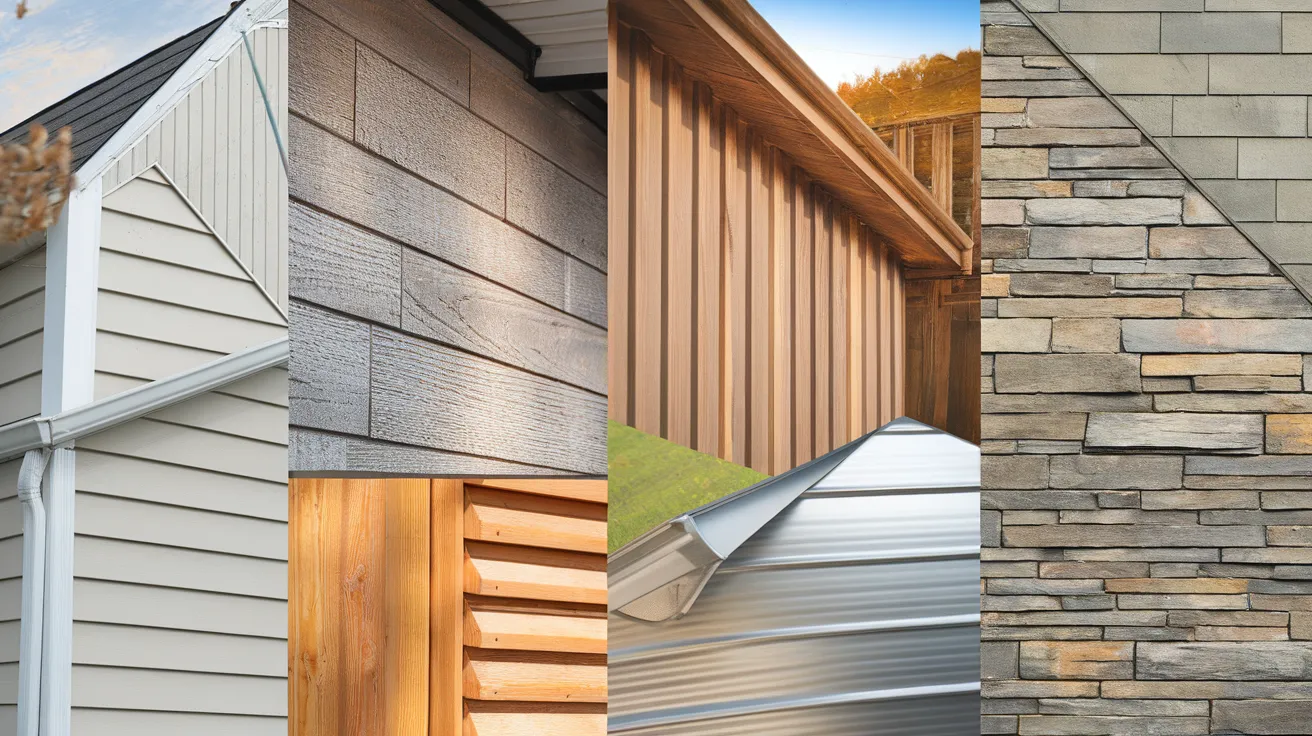
Choosing the right material is your biggest cost decision. Each option has different price points and benefits. The following is what you need to know about the most popular choices:
1. Vinyl Siding
Vinyl siding is one of the most affordable siding materials available. It’s widely available, simple to install, and works well for homeowners trying to stick to a budget.
Many also appreciate how it repels insects and requires minimal maintenance.
| Feature | Details |
|---|---|
| Cost | $3 to $8 per square foot (installed) |
| Maintenance | Low – no painting or sealing required |
| Durability | Fair – may crack in extreme cold or hail |
| Color Options | Wide range of choices |
| Pest Resistance | Excellent – resists rot and insects |
| Installation | DIY-friendly and widely supported |
While it has its downsides, especially in harsh climates, vinyl siding offers strong value for its price. If you need siding that’s dependable and cost-effective, vinyl is hard to beat.
2. Fiber Cement
Fiber cement siding is a popular middle-ground choice for homeowners. It offers the charm of wood without the rot, and it withstands fire, pests, and tough weather conditions.
Though more expensive than vinyl, its durability makes it worth the extra cost for many.
| Feature | Details |
|---|---|
| Cost | $6 to $12 per square foot (installed) |
| Appearance | Mimics wood grain for a natural look |
| Fire Resistance | High – non-combustible material |
| Pest Resistance | Excellent – termites and insects stay away |
| Durability | Very high – resists warping and decay |
| Paintable | Yes – holds paint well over time |
| Installation | Skilled labor required – not DIY-friendly |
Fiber cement siding provides long-lasting performance and a high-end appearance. Just make sure to hire experienced pros, as proper installation is key to getting full value.
3. Wood Siding
Wood siding offers unmatched charm and traditional appeal. It’s often the go-to for historic homes or high-end custom builds.
While it comes with a higher upfront cost, the natural warmth and curb appeal can be worth it for many homeowners.
| Feature | Details |
|---|---|
| Cost | $8 to $15 per square foot (installed) |
| Appearance | Timeless and elegant natural grain |
| Insulation | Good – natural thermal resistance |
| Lifespan | 50+ years with regular maintenance |
| Home Value Impact | High – often increases resale value |
| Maintenance Needs | High – paint or stain every 5–7 years |
| Pest Vulnerability | Moderate – treat for termites and rot |
Wood siding rewards you with classic beauty, but it requires a commitment. Stay on top of maintenance to enjoy the full lifespan and value of your investment.
4. Engineered Wood Siding
Engineered wood siding provides the look of real wood without the high cost or heavy maintenance.
It’s made from wood strands and resins, pressed for strength and treated for durability. This makes it a practical choice for homeowners who want both style and savings.
| Feature | Details |
|---|---|
| Cost | $7 to $13 per square foot (installed) |
| Appearance | Wood-like finish with uniform texture |
| Durability | High resistant to moisture and warping |
| Installation | Easier and quicker than real wood |
| Lifespan | 20–30 years with proper care |
| Maintenance Needs | Moderate – less frequent than natural wood |
| Cost Efficiency | Better long-term value than solid wood |
Engineered wood balances affordability and aesthetics. It’s ideal for homeowners who want the charm of wood with less hassle.
5. Metal Siding
Metal siding brings serious durability to your home. It’s often used on commercial buildings but has become popular with homeowners who want a sleek, modern look and tough protection.
If you choose aluminum or steel, you’re getting siding that withstands nearly anything.
| Feature | Aluminum Siding | Steel Siding |
|---|---|---|
| Cost (installed) | $5 to $11 per square foot | $8 to $14 per square foot |
| Durability | High corrosion resistant | Very high dent and impact resistant |
| Fire & Pest Resistance | Excellent | Excellent |
| Appearance | Clean, modern finish | Industrial, strong look |
| Maintenance | Low – occasional washing | Low – occasional washing |
| Recyclability | Fully recyclable | Fully recyclable |
Metal siding lasts decades with little care. Be prepared for minor dents and expansion noise. It’s a smart choice if you value strength and style.
6. Stone Veneers
Stone veneer siding offers unmatched beauty and timeless charm. It’s often chosen for upscale homes or accent walls that make a bold statement.
While the material cost is high, the visual impact and durability justify the price for many homeowners.
| Feature | Stone Veneer Siding |
|---|---|
| Cost (installed) | $12 to $25 per square foot |
| Curb Appeal | Extremely high |
| Maintenance | Very low – nearly maintenance-free |
| Durability | Excellent – resists weather and aging |
| Home Value Impact | High – increases resale value |
| Installation | Labor-intensive, requires skill |
| Structural Needs | May need added support |
Stone veneer brings elegance and long-term value. Just plan for the upfront investment and professional installation. It’s a luxury choice that truly lasts.
House Siding: Additional Costs to Consider
When replacing siding, the base price isn’t the whole story. Several additional costs often arise, and they can impact your final budget. Be prepared for the following additional expenses:
- Permits: $100 to $500
- Trim and accessories: $2 to $5 per linear foot
- Insulation upgrades: $1 to $3 per square foot
- Electrical work: $150 to $300 per item
- Cleanup and disposal: $500 to $1,500
DIY vs Hiring a Professional for Redoing Siding
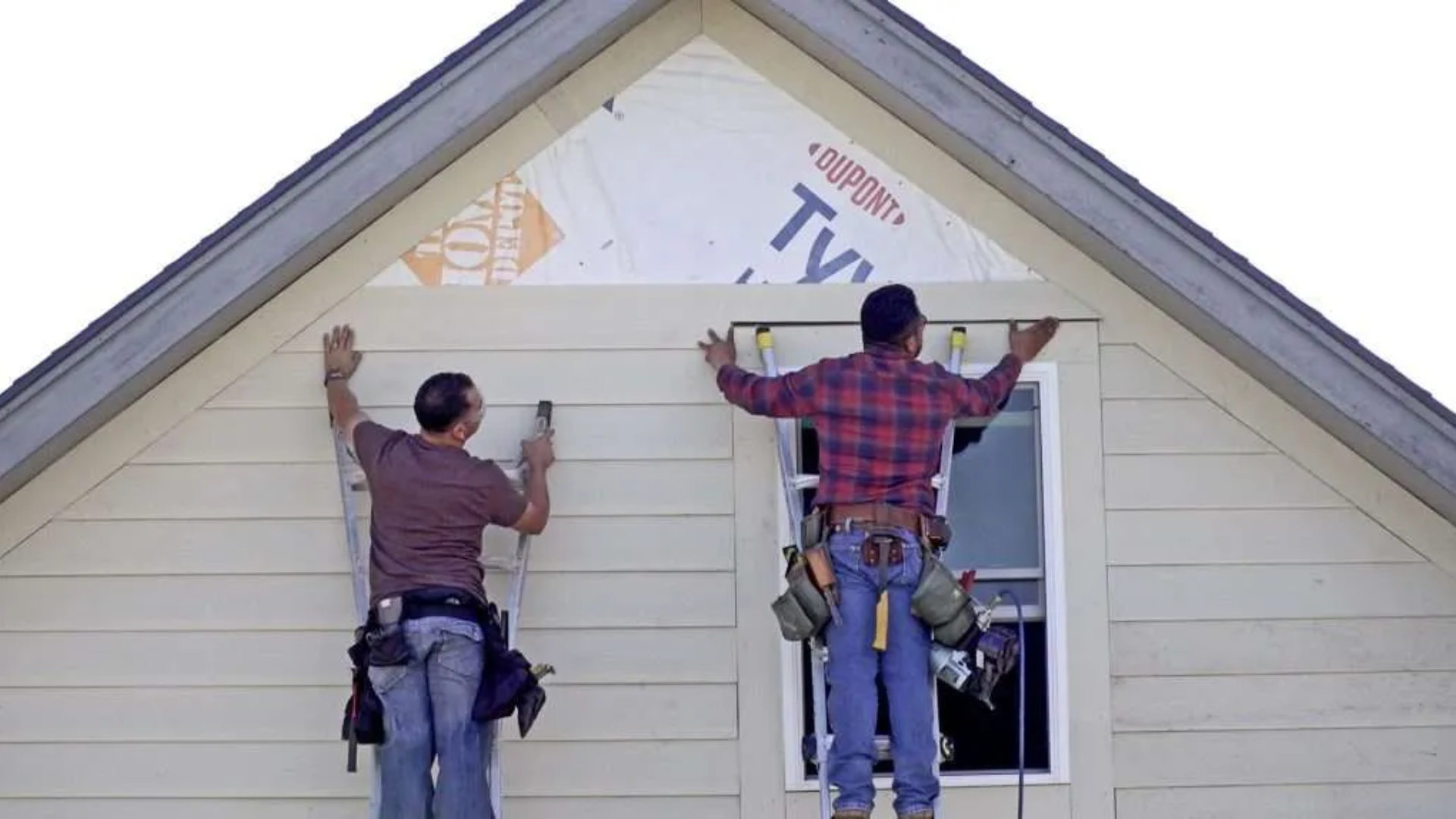
Doing siding replacement yourself can save a lot of money. Labor is one of the largest components of the total cost, so skipping it can reduce your budget by thousands.
However, the job is substantial, and it’s not suitable for everyone. Here’s how to know if DIY is worth it for you:
| DIY If You… | Hire Pros If… |
|---|---|
| Have experience with construction work | Your home has two or more stories |
| Have plenty of time and patience | The exterior includes complex features |
| Live in a one-story, simple home | You don’t own or want to buy special tools |
| Like taking on big, hands-on projects | Local codes require licensed professional work |
DIY can work if you know what you’re doing. But if you’re unsure, it’s safer to hire experienced pros. A bad job can cost more in repairs than professional work from the start.
Tips to Save Money on Siding Replacement
Use the following tips to reduce costs without sacrificing quality:
- Get Multiple Quotes: Compare prices from at least three contractors to find the best deal.
- Time Your Project Right: Schedule during off-peak seasons for better rates and availability.
- Buy Your Materials: Purchasing materials yourself may save money, especially during sales.
- Bundle Related Work: Combine repairs with other home projects to cut down on labor costs.
- Consider Partial Replacement: If damage is limited, you may not need to replace the entire floor.
Conclusion
Replacing your home’s siding is a significant decision, but it can add value for years. It protects your home, boosts curb appeal, and lowers energy bills when done right.
Before jumping in, consider your budget, timeline, and the duration of your stay in the home. Don’t go with the cheapest offer right away.
A solid, well-installed siding job lasts decades and prevents future problems. Good siding keeps your home safe and helps reduce utility costs. It also adds to your home’s value.
Ready to start? Get quotes from licensed contractors. Compare prices, warranties, and materials carefully. Have questions or tips? Share them in the comments to help other homeowners.
Frequently Asked Questions
What’s the Best Siding for Cold Climates?
Fiber cement and engineered wood handle cold well. They resist cracking, unlike vinyl, which can become brittle and fail in extreme freezing temperatures.
How Often Should Siding Be Replaced?
Most quality siding lasts between 20 and 50 years. Longevity depends on the material, how well it’s maintained, and your local weather conditions.
Does New Siding Increase Home Value?
Yes, it improves curb appeal and insulation. Homeowners typically recoup 75–85% of the cost during resale, making it a strong investment.
What Happens if I Skip House Wrap?
Failing to install house wrap can lead to severe moisture damage. It helps block water, reduce drafts, and improve energy efficiency. Always include it during siding installs.
Can I Paint Vinyl Siding?
Yes, but use vinyl-safe exterior paint. Avoid very dark colors, which can absorb heat and cause the vinyl to warp or peel over time.

